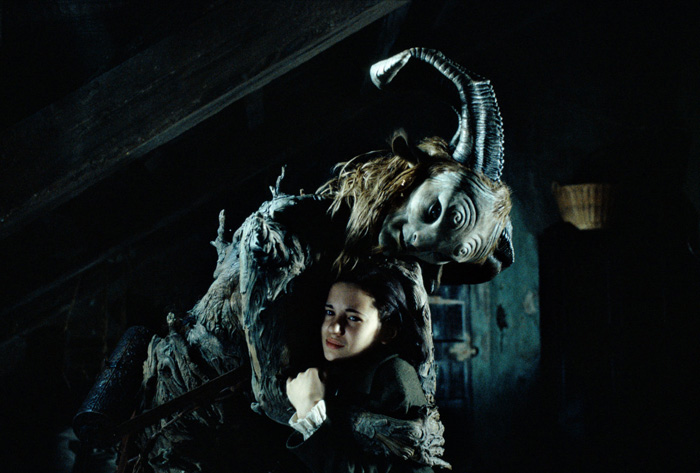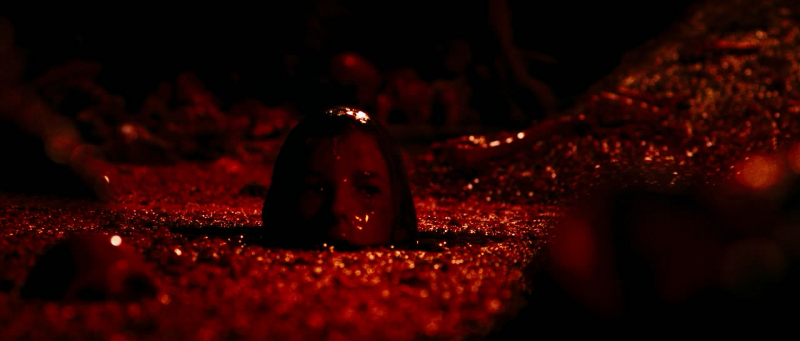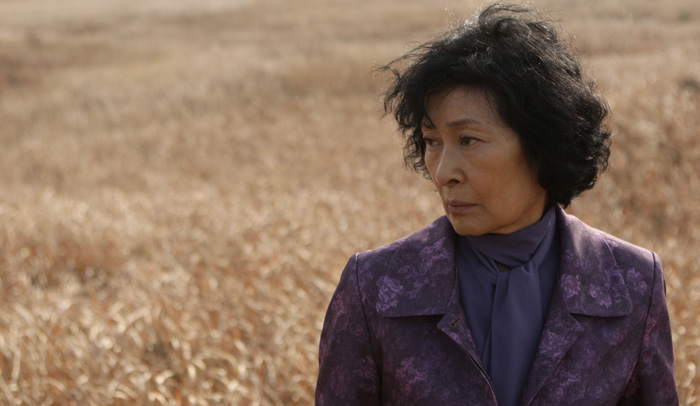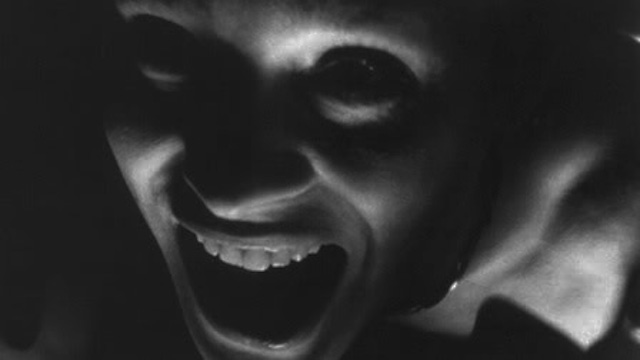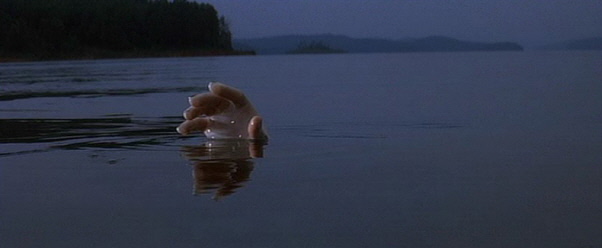PARDON MY HYBERBOLE, but after twelve months of horror movies, I feel like a hero.
When Joseph Campbell speaks of the monomyth, he isn’t talking about the melding of my ass to a sofa, like some character in a Cronenberg film. No, a hero’s journey demands a protagonist overcome countless trials and obstacles before returning to ordinary life. When I committed to a year-long series for The Weeklings, I didn’t dream that the viewing of over two hundred horror films would put me through an emotional gauntlet. Identifying with the lead character is what you’re supposed to do but the mere act of sitting down to watch yet another chiller was starting to feel epic.
Even in the schlockiest of slashers, the protagonist must battle a force which takes her (or him) to a new understanding of psychological and sometimes physical strength – not that My Bloody Valentine has anything in common with The Odyssey, mind you, but heroines in The Descent, A Nightmare On Elm Street, Friday the 13th (perhaps even better in Friday the 13th Part II) endure terrifying trials, using wits, strength or both before their renewal. Horror films are essentially myths and fairy tales that shift the focus from self-actualization to bloodletting.
Guillermo Del Toro’s dark-fantasy, Pan’s Labyrinth, has a clear line to hero’s myth structure. It isn’t a horror film but, like The Wizard of Oz (re-released in 3D on the big screen earlier this month), the terrors are many. (How many kids weren’t at least a little frightened by Margaret Hamilton’s Wicked Witch of the West?) Pan’s Labyrinth plays out in a dark landscape, mixing mythical and man-made horrors for Ofelia, the young protagonist whose trials are set out by both a mysterious Faun and a cruel stepfather. It also proves there is nothing wrong with a dark ending. When such a conclusion is inevitable, it is also satisfying. The dual ending of Pan’s Labyrinth is simultaneously heart-rending and uplifting.
There are plenty of horror films which give us that dual satisfaction. Carrie has the weight of classical tragedy. Father Karras’ sacrifice in The Exorcist is his redemption, and the coda sends you out of the theatre with a grip on the spine. In The Descent, our heroine is literally bathed in blood before her rebirth. When characters survive, victorious over the Minotaur, having seen more horror than any human should ever have to endure, they somehow still manage in the world. Regan, Laurie Strode, Melanie Daniels may battle lifelong demons but we trust they’ll survive. If they can, maybe we can too, striding into our world to face its real horrors, hope in our own strengths renewed.
But as our world has gotten grimmer, so has horror. A new breed of film, spawned by the success of Saw and the awareness of torture in our socio-political consciousness, has put fright heroes through more and more grueling trials. Dour and disappointing endings are delivered to characters who have struggled for two-plus hours against unbearable odds. They are neither set free nor rewarded for their ordeals. These movies may be taking a toll on my psyche. (It might also be that, after watching more than 200 horror films this year, I have fallen into despair because so many of them are so badly made but that actually has its own pleasures. See The 10 Best Worst Horror Movies from July 2013.)
I have to dismiss most horror sequels, especially those created with a view toward franchise potential. Call me a curmudgeon, but there are few that work. When they do, it’s because they either deepen the mythology or become mega-myths of their own (sometimes both.) The Descent 2, Aliens, The Evil Dead 2, Hellraiser II, The Bride of Frankenstein, and Dawn of the Dead take us further along the journeys begun in their originals. Too often in sequels, in an effort to keep audiences interested or because a star wasn’t available, principal characters are dispatched in myriad ways– none of which have to do with good storytelling. (Case in point: Alien 3.)
I honestly don’t dislike grim endings. (Sadistic is an entirely different matter and if you’ve been reading the series, you know that very few of my favorites ended with the torture or murder of the protagonist.) The shocking end of George A. Romero’s Night of the Living Dead leaves you with more to think about than Romero could have predicted.
Stephen King has said it is more difficult to scare an audience today. I’d say it’s more difficult to do a LOT of things to an audience today. Attention spans are shorter and with so much information coming at us all the time, how can anything seem new? Given the real horror of our world, how can we even justify the genre? The Colorado floods, the death of Trayvon Martin, bias attacks against the LGBT community, chemical attacks in Syria, the siege of Nairobi’s Westgate Mall, have all happened in the year I have been drowning in buckets of red corn syrup and crocodile tears. Then there are the ongoing horrors of global climate change and the wars in Iraq and Afghanistan…
In his Danse Macabre, King speaks of a “forbidden door,” suggesting there is more than voyeurism in a horror fan’s drive. “Perhaps we go to the forbidden door or window willingly,” he writes, “because we understand that a time comes when we must go whether we want to or not.”
Apocalypse Now, Francis Ford Coppola’s unrelenting adaptation of Joseph Conrad’s Heart of Darkness, is a kind of meta-horror movie, putting us through the rigors of Vietnam. We are asked to witness the shock and desecration endured by the soldiers as well as the slow turning of the mind such horror can yield. Why do we watch? Why does it bring satisfaction? Why do we go willingly into “…the horror … the horror?”
We go so that we can return from its depths.
~~~
Here are my top five films for tours through the heart of darkness. None can truly be classified as horror (though Bergman’s Hour of the Wolf comes close and Deliverance is clearly a thriller). All five send their protagonists to places they hoped never to go. Sometimes they emerge on the other side.
Mother (2009) – A woman will do anything to save her son from an accusation of murder. Along the way, she discovers what she is capable of. Sometimes funny, sometimes moving, and ultimately devastating. Hye-ja Kim is superb as the title character.
Hour of the Wolf (1968) – Max von Sydow and Liv Ullmann give typically exceptional performances as Johan and Alma Borg, a husband and wife drawn into a bizarre encounter with their neighbors who may or may not be demons. A surreal fantasy, this movie will satisfy fans of David Lynch as it works on the subconscious. It begins, like all Bergman, with a focus on character. Ms. Ullmann is particularly touching and von Sydow is never less than remarkable.
Pan’s Labyrinth (2006) – During Spain’s Franco regime, Ofelia and her mother go to live with a General who is Ofelia’s new stepfather. A Faun, believing Ofelia to be a lost princess, tests her nobility with three tasks. A dark fairy tale for adults in which the heroine just happens to be a child, it’s also del Toro at his best.
Apocalypse Now (1979) – Coppola’s enduring adaptation of Conrad’s Heart of Darkness is reimagined for the Vietnam era. U.S. Army Captain Benjamin L. Willard (Martin Sheen) is tasked with finding and killing AWOL Colonel Walter E. Kurtz (Marlon Brando) who has “gone rogue.” What Capt. Willard finds is possibly more horrific than the war around him.
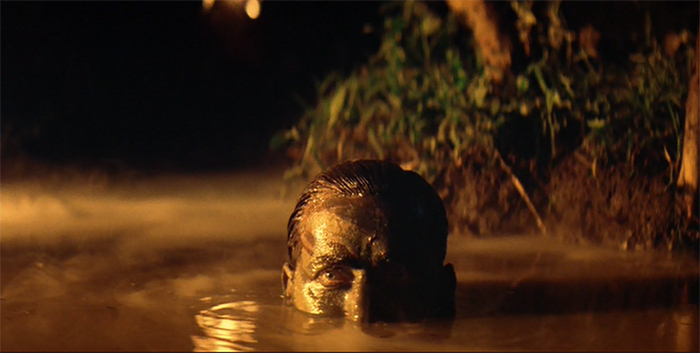
Martin Sheen prepares to meet the monster. (You’ll recognize the shot and the symbolism in THE DESCENT.)
Deliverance (1972) – Four friends (Jon Voight, Burt Reynolds, Ned Beatty, Ronny Cox) on a vacation in rural Georgia, run afoul of an inbred clan. When they kill one of the locals in self-defense, the friends must run for their lives. Deliverance was a game-changer and its brutality still has the power to shock. An infamous male rape is necessarily graphic and the final frame is more unnerving than any scene in the films I reviewed this year.

